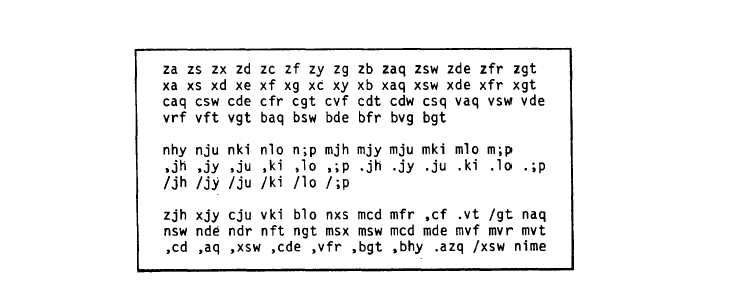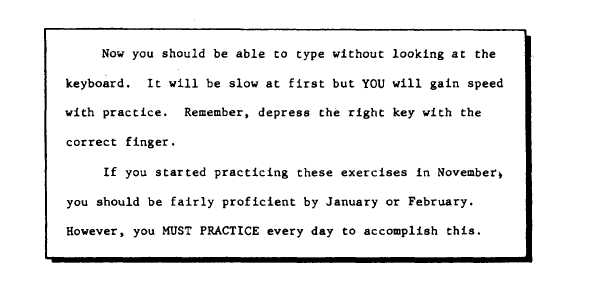
Figure 2-6. - Exercises for finger reaches using the bottom keyboard row.
purpose of this section and the corresponding illustration is to show how the shift is used: Figure 2-7 shows some exercises that cause you to shift to the uppercase mode. This illustration also puts into use some of the reaches learned in the previous exercises. At this point, you should not be looking at the keyboard, Although speed will probably be slow at first and many typing errors will occur, it is extremely important that the correct fingers depress the correct keys. DO NOT LOOK AT THE KEYBOARD. DO NOT WORRY ABOUT SPEED; THAT WILL COME LATER.
The Now in line 1, It and YOU in line 2, Remember line 3 all require shifting. Because the letter N is depressed with the right index finger, the left-hand shift key must be depressed. This is always the case; that is, the shift key is depressed with the little finger of the hand NOT depressing the capital letter being typed. As mentioned in previous paragraphs, the shift keys are depressed by the little finger.
Three words (YOU, MUST, and PRACTICE) in this exercise are all uppercase. These words were put into the exercise to point out the shift lock key. This key is directly above the left-hand shift key, and its purpose is to lock the machine into the uppercase mode. This feature eliminates and having "to keep the shift key depressed with the little finger while typing a full word or sentence consisting of all capital letters.

Figure 2-7. - Exercise for shifting and alphabetical reaches.
Continue Reading